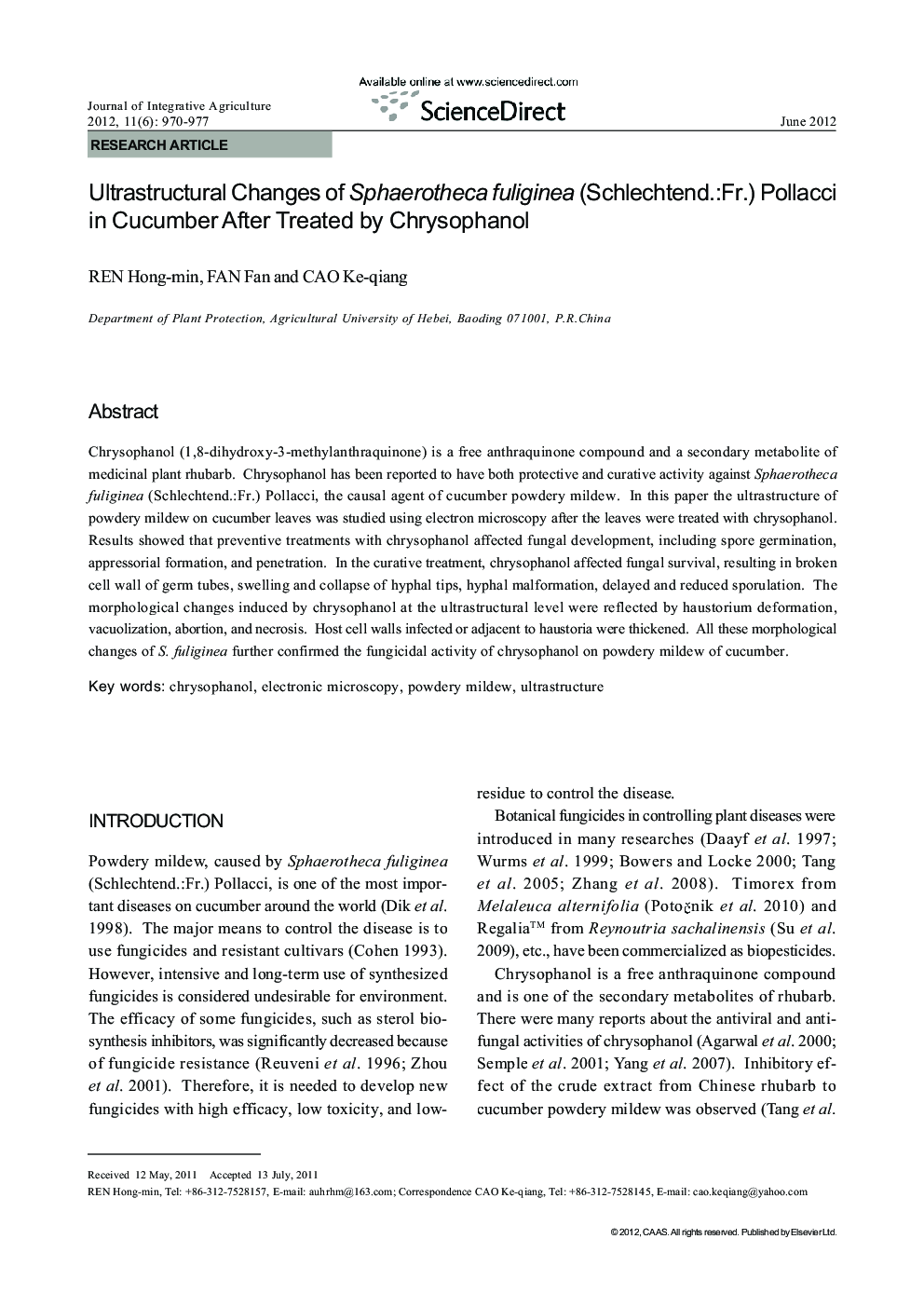| Article ID | Journal | Published Year | Pages | File Type |
|---|---|---|---|---|
| 4495150 | Journal of Integrative Agriculture | 2012 | 8 Pages |
Chrysophanol (1,8-dihydroxy-3-methylanthraquinone) is a free anthraquinone compound and a secondary metabolite of medicinal plant rhubarb. Chrysophanol has been reported to have both protective and curative activity against Sphaerotheca fuliginea (Schlechtend.:Fr.) Pollacci, the causal agent of cucumber powdery mildew. In this paper the ultrastructure of powdery mildew on cucumber leaves was studied using electron microscopy after the leaves were treated with chrysophanol. Results showed that preventive treatments with chrysophanol affected fungal development, including spore germination, appressorial formation, and penetration. In the curative treatment, chrysophanol affected fungal survival, resulting in broken cell wall of germ tubes, swelling and collapse of hyphal tips, hyphal malformation, delayed and reduced sporulation. The morphological changes induced by chrysophanol at the ultrastructural level were reflected by haustorium deformation, vacuolization, abortion, and necrosis. Host cell walls infected or adjacent to haustoria were thickened. All these morphological changes of S. fuliginea further confirmed the fungicidal activity of chrysophanol on powdery mildew of cucumber.
